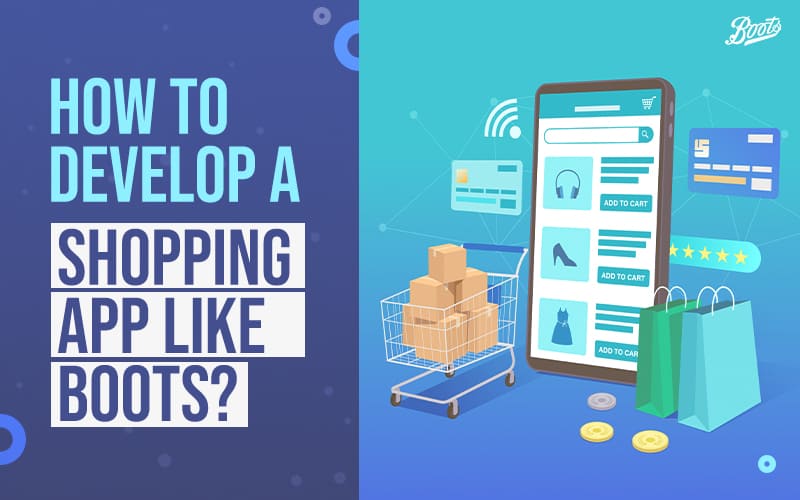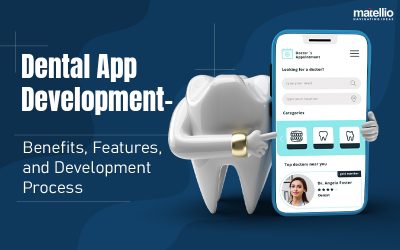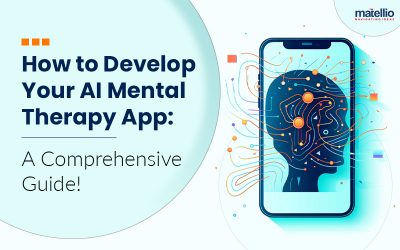How To Develop A Shopping App Like Boots?
In the present days, the number of people who purchase online has increased dramatically. Ecommerce companies are making a lot of money all over the world. This trend of boots shopping app or digital marketplace has also been influenced by the expanding number of mobile users. Application stores and in-app advertising are expected to produce $693 billion in profits for mobile apps in 2021. Furthermore, by 2022, workplace mobility is expected to be valued at $510.39 billion.
Though there’re many aspects to consider when designing a mobile shopping app for your store, there are a few that you really can’t manage to miss. While many businesses are attempting to capitalise on this trend, many are unaware of how to develop a bespoke mobile app properly. These growth estimates can help your business succeed in the competitive marketplace, but only if they’re backed up by carefully maintained mobile app development services.
However, there are many things to consider during shopping app development; we’ll go over some of the most important ones in this blog.
Before discussing how to build a boots shopping app? Here’s a,
Boots shopping app: Overview!
The boots shopping app was designed to enhance Boots’ online shopping experience. The digital Boots Advantage Card is the dominant component. Users can indeed choose from a variety of offers, save their favourites to their Boots Card, and redeem them in-store. They could also check their current point balance, obtain a medical prescription, schedule in-store appointments, and locate the nearest store via the store locator functionality.
So, now let’s move forward and check,
What functionalities do you need to consider during shopping app development?
In order to develop an app similar to the boots shopping app, you need to choose top features and functionalities before starting the online shopping app development! Below are some features that you can consider!
- Multiple accounts integration – If you run a marketplace, you should consider not only client accounts but also seller accounts. Accounts for sellers should have their own set of functionality, such as the potential to update products, accept payments, and connect with consumers.
- Advanced search & filters – Product searches should be separated into categories for ease of use. It’s a good idea to have smart search in your application so that it can anticipate what the consumer is entering. Customers, on the other hand, use filters to find products.
- Chatbot integration – Users who have questions about using app should be able to get help through the app’s support function. Users should be able to contact your online store’s customer service via the app’s chatbot functionality and contact information. Finally, the app should solicit consumer input so that you may improve the app’s appearance and user experience for users by improving your services depending on the feedback you receive.
- Catalog – Your shopping mobile app’s product catalogue is the backbone of the application. Your catalogue should be visually appealing, as well as the most common approach to do so is to create panels with images, product names, and pricing. Another option is to build a list of the same elements that are placed exactly beneath one another. If it fits well within your app style, you could also show a piece of a product details.
- Loyalty programs – Once the user downloads your application, it’s likely that they’ll use it again. However, you may strengthen this relationship even further by offering highly targeted loyalty and membership rewards to your app users. This would attract new users while retaining existing ones!
- Push notifications – One of the most valuable features of online shopping apps is push notifications. You may engage with your consumers, urge them to buy, and notify them about incentives and discounts through push notifications.
- Order status – Following the completion of an order, you should update your users on the status of their order – it is standard practise to send an alert message when an order is sent, along with an expected delivery time. You must also send out a message to your customer when the product appears.
- Product reviews – Individuals are less inclined to buy a thing online if they’ve not seen it in reality, therefore ratings and reviews are essential. When it comes to internet purchasing, the only thing shoppers can rely on are the reviews of others who have used the goods.
As you’ve seen the functionalities for your bespoke mobile app similar to Boots shopping app. Now, it’s time to discuss,
How to develop an online shopping app? Key steps that you need to follow during shopping mobile app development!
Below are some points on which you need to pay more attention before starting the online shopping app development cycle. So, take a look!
1. Do some research
The first step in developing a shopping mobile app is deciding on a plan for turning your concept into a competitive app. You might want to make this a huge part of your corporate strategy. Because the goals of each app differ, the strategy has an app-specific impact that must be addressed during the shopping app development process. Having a great app idea isn’t always enough to ensure success. If you don’t analyse your target audience, one of the most typical mistakes you’ll make is placing your application in the wrong market.
That is why, before developing a bespoke shopping app, you should conduct significant market research. During this stage, you’ll:
- Recognize the application’s users
- Examine the competitors
- Define the app’s objectives and aims
2. Choose the right platform and development approach
You must pick which mobile platform is best for your shopping app based on your target demographic. Based on your study, you may discover that the most of your target clients use Android, iOS, or both, and you must choose a platform for your application correspondingly. When deciding whether to create a native or hybrid mobile app, you should weigh the advantages and disadvantages of each. Hybrid apps, while less expensive than native, are not as fluid as their equivalents and may slow under heavy use. Native apps, on the other hand, are specifically created for a platform and employ all of the platform’s features, providing a greater shopping experience at a premium cost.
3. Focus on design
The goal of an application’s architecture is to provide a refined user experience that is frictionless and intuitive. A shopping mobile application’s success is defined by how successfully users accept and profit from all of the app’s capabilities. The aim of UI/UX design for mobile apps is to provide exceptional user experiences that make your shopping mobile app dynamic, intuitive, and user-friendly. While beautiful UI designs will aid in early adoption, your application must also provide straightforward user experiences to order for users to remain engaged. You can also build wireframes for your app similar to boots shopping app. Wireframes are more attractiveness and user experience than with colour combinations and styles. Wireframes are a less complex and affordable way to build app layouts and iterate through them during the design evaluation process. You should examine device specific design when designing wireframes.
4. Do test the app
Quality assurance (QA) testing is crucial part of the shopping app development process since it ensures that the application is reliable, functional, and secure. You must first build test cases that cover all elements of app testing in order to assure thorough QA testing of your application. The final implementation must match the user experience defined by the app design team, which is a vital phase in mobile app testing. Your shopping app’s visuals, functionality, and engagement are what will offer your end consumers their initial impression of it. Make sure that your app’s typefaces, style approaches, colour palette, and padding between data, icon designs, and navigation are all consistent.
If you’re developing a shopping app development for both iOS and Android, then functional testing should include a features comparison between the two variants of your application. Testing is important to an app’s long-term performance, and it takes up a significant portion of our overall app development process. A well-thought-out mobile testing strategy is essential for producing a high-quality mobile app; that’s why it’s essential to hire the leading mobile app development company because they have whole dedicated team of following members:
- Frontend programmers
- Backend programmers
- UI/UX designers
- Business analyst
- QA engineers
- Project manager
5. Maintenance and support
Allow users to post comments and suggestions for the application to your business. End-user support and frequent app updating with enhancements will be vital to maintaining users engaged. Unlike web applications, where patch releases can be made instantly accessible to app users, mobile app updates must go through a similar submission and review process as the submission. Furthermore, with mobile applications, you must keep up with technological advances and regularly upgrade your app for new mobile devices and OS architectures.
6. Consider quality security standards
Apps are personal information databases that are frequently the target of data breaches and privacy infringement. Which is why many consumers are hesitant to shop on their mobiles. Given the fact that online security has advanced dramatically in recent years, security dangers continue to exist. This necessitates the creation of a bug-free mobile app that is completely safe from external branches. To ensure that your bespoke online shopping app is not vulnerable to cyber-attacks, take extra precautions. It must be constructed on a solid framework that incorporates the most recent security patches.
Now, let’s check!
How much shopping mobile app development will cost in 2021?
As previously mentioned, the cost to build an app similar to Boots shopping app depends on factors such as:
- Platform
- Features to be included
- Tech stack
- Development approach
Besides, the cost of an online shopping app development is mostly determined by the hourly rates of the development team you hire. That’s why it’s important to collaborate with top app development company. If you want to estimate your idea, contact us.
Conclusion
You now understand how to create an online shopping app. We hope you found the information offered on this blog to be useful. But keep in mind that in today’s highly competitive world, your app must keep up with the latest industrial and technical advancements. In today’s world, it’s not about being relatively slow that wins the race; it’s about having a technological edge which hunts down the competition. So don’t put it off any; contact a top mobile app development company today and get started! Please contact us if you are seeking such a company. Our extremely competent staff of shopping app developers can transform your ideas into a new app. For retail businesses of all sizes and sorts, we develop comprehensive shopping mobile app solutions. From the early inputs to the final deployment, our team offers complete transparency in all aspects with a customer-centric approach. So, don’t delay in teaming with us to create an online shopping app for your business.






